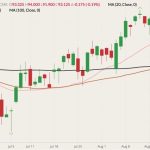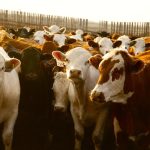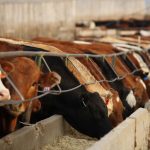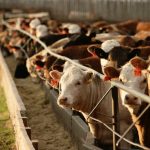Chicago | Reuters — Chicago Mercantile Exchange lean hog futures slipped on Friday, with the most-active contract dipping to a nearly six-week low during the session, as weak export demand continued to weigh on futures, analysts said. Meanwhile, a government report, released after the CME closed, said that far more cattle were marketed in July […] Read more

U.S. livestock: CME lean hogs slip
USDA marks surprise jump in July cattle placements

Klassen: Light test of feeder cattle reflects hot demand
Compared to last week, Western Canadian yearling prices were relatively unchanged; prices for mid-weight calves were $2 to $5 higher. Calves under 550 pounds were up $6 to $8 on average while feather light bawlers were up a sold $10 above week-ago levels. Weaker feed grain prices along with strength in the deferred live cattle […] Read more

Klassen: Feeder market experiences calm before upcoming storm
Compared to last week, western Canadian feeder cattle markets traded $2-$4 on either side of unchanged. Once again, overall volumes were limited, with small strings and singles moving through auction barns. The quality was quite variable and offbeat stragglers were quite common. Buyers incorporate a risk discount on these cattle; therefore, prices do not represent […] Read more

Feed weekly outlook: New-crop supply outlook ‘significantly better’ as prices drop
MarketsFarm — Prices for feed barley and wheat in Western Canada are still higher than this time last year, but if large declines in those prices are any indication, the 2022 harvest is set to be more typical than that of 2021. The high-delivered bid for Saskatchewan feed barley is $8 per bushel, $1 lower […] Read more

Klassen: Tighter fundamentals support feeder complex
Compared to last week, western Canadian yearling prices were steady to $2 higher on average while calf markets were up $2-$4. There was an increase in activity over the past week, although many auction barns remain in holiday mode. Major feedlot operators in southern Alberta were extremely aggressive on yearlings fresh off grass and this […] Read more

Feed weekly outlook: Grains under pressure awaiting new crop
Farmers 'digging in and being patient'
MarketsFarm — Feed grain bids in Western Canada continue to come under pressure, as feedlots chew through corn imports from the United States and wait on the new-crop harvest. “We’re certainly seeing things soften,” said grain trader Shaun Smith of Market Place Commodities in Lethbridge. Declines in the Chicago futures and good Prairie growing conditions […] Read more

Klassen: Feeder cattle trade at 52-week highs
New-crop feed grain values under pressure
Compared to last week, western Canadian yearlings traded steady to $2 higher with exceptional demand noted on steers over 700 pounds. Calf values were mixed in Alberta with markets trading $2-$4 on either side of unchanged; however, prices were steady to $4 higher in Saskatchewan and Manitoba. Small groups of various quality characterized the feeder […] Read more

Klassen: Feeder cattle trend higher, favourable beef outlook
Compared to last week, Western Canadian yearlings traded $8 to as much as $12 higher; mid-weight feeders in the range of 700-800 pounds were also $8-10 higher. Calves under 700 pounds were unchanged to $6 higher. The feeder market took a fortuitous bounce last week. Major feedlots were extremely aggressive on yearlings while supplies were […] Read more

Klassen: Barley price forecasts enhance feeder cattle demand
Recent rains nearly guarantee at least average yields
Compared to last week, western Canadian yearling prices were relatively unchanged. Heifer and steer calves were quoted steady to $3 lower on average but the market was harder to define due to limited numbers. Small packages of calves of various quality resulted in the wide-ranging price structure. Buying interest for grassers appears to have subsided. […] Read more

Feed weekly outlook: Rains boost Prairie grain prospects
MarketsFarm — Heavy rains in Alberta and western Saskatchewan over the past week should give grain crops a good start to the growing season — and put some pressure on the feed grain market, which remains at historically high prices after last year’s drought. The rain “will kick the production can a fairly good ways […] Read more

